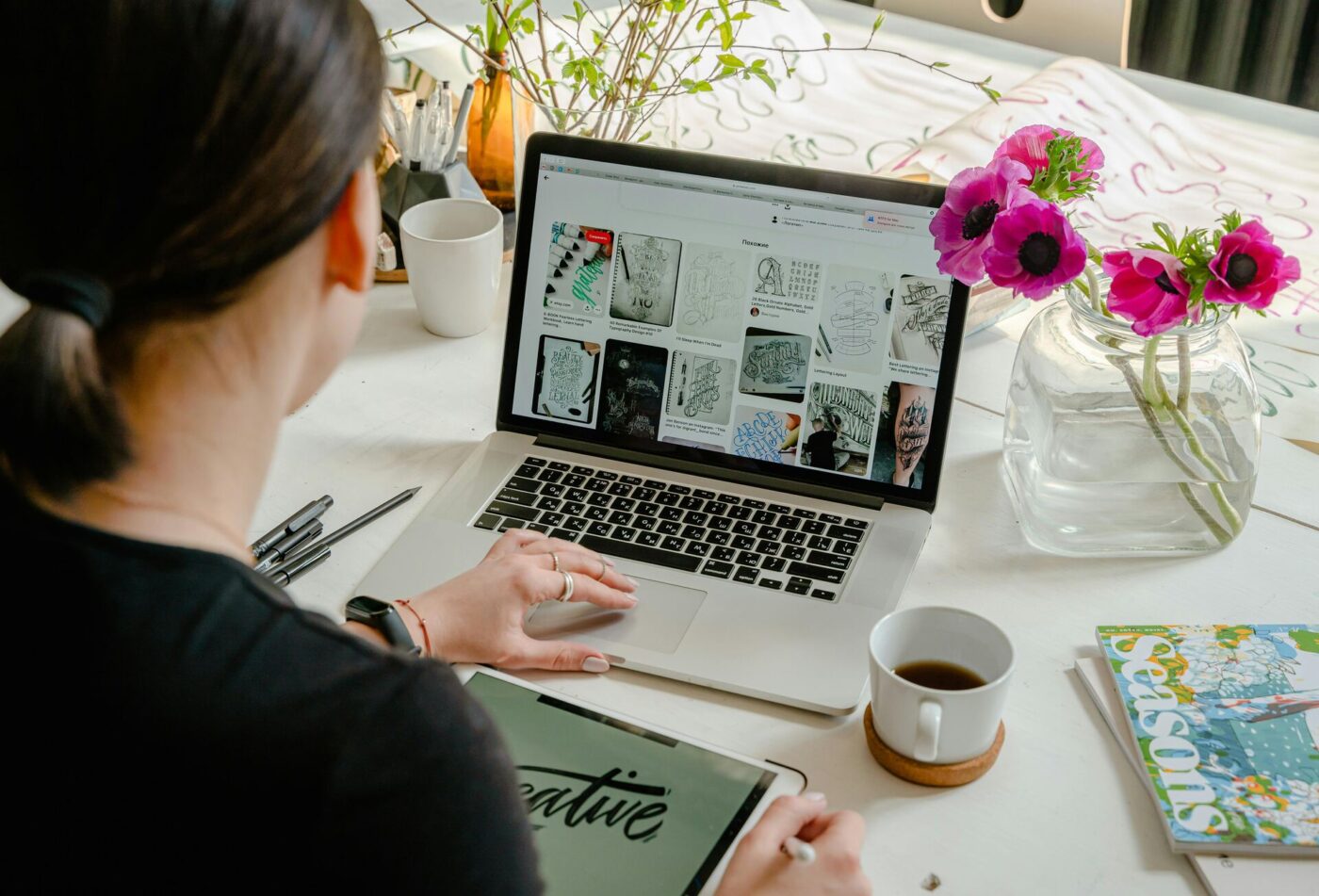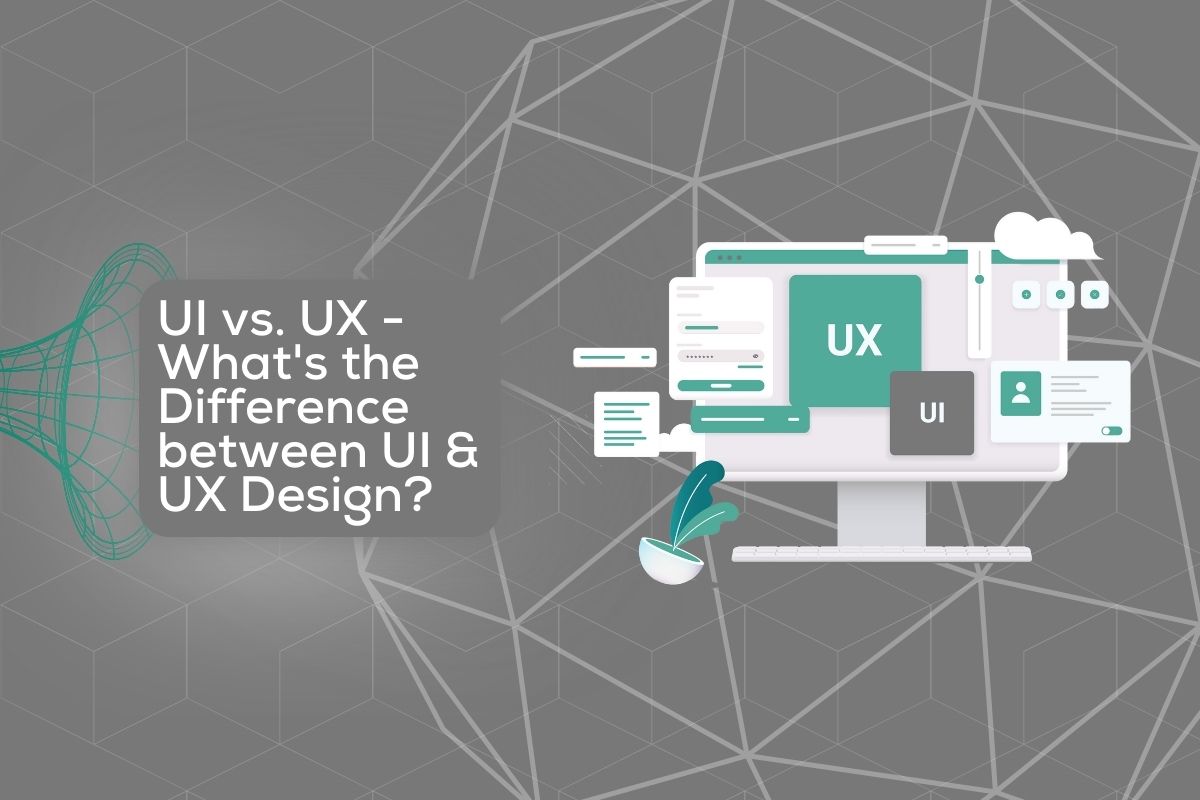In the world of digital product design, the debate surrounding UI vs. UX is shaping the way we interact with technology. This blog post will explain the differences between user interface (UI) and user experience (UX) design, shedding light on how each discipline plays a crucial role in creating seamless and engaging digital environments.
What Is UI Design?
What is UX and UI design? Let’s start with the first approach. UI design is the process of creating the visual and interactive elements of a digital product’s interface. It focuses on ensuring that users can interact with a product in an intuitive and aesthetically pleasing manner. This includes the design of screens, pages, and visual elements like buttons, icons, spacing, and typography.
The goal of UI design is to visually guide users through a product’s interface, especially in rapid prototyping software development. This boosts the product usability and ensures that the interface is aligned with the brand’s identity. Just like professional mobile app development services use the best-suited programming language, the UI design ensures users can easily navigate the software.

What Is UX Design?
UX design goes beyond the surface, focusing on the entire experience users have with a product from start to finish. It encompasses all aspects of a user’s interaction with a company, its services, and its products, aiming to create efficient, meaningful, and enjoyable experiences.
This aspect is a crucial step in MVP software development for a deep understanding of users’ needs, behaviors, and motivations. To do that, a professional MVP development company uses techniques such as user research, software prototyping, usability testing, and interaction design. The primary goal is to solve users’ problems and enhance their satisfaction through a seamless, intuitive, and user-centric design process.

UI vs. UX – Explore the Main Differences
What is UX/UI design? Now that you know the basics of what each approach is, let’s explore some of the most important differences between these designs. We’ll also go over the unique roles and contributions each discipline brings to the table.
Focus Areas of Product for End-User
UI design is predominantly concerned with the visual and interactive elements of a product’s interface. It focuses on how the product looks and feels, including the color scheme, typography, button styles, imagery, and overall graphical layout. Designers aim to create interfaces that are aesthetically pleasing and aligned with the brand’s identity.
On the other hand, UX design is concerned with the overall experience a user has when interacting with a product. It focuses on usability, accessibility, and efficiency in accomplishing tasks. Designers work on structuring the entire user journey, from the initial interaction to the final outcome, ensuring it is as intuitive and satisfying as possible.
Goals Differ From Visual Guide to Experience Optimization
The goal of UI design is to visually guide the user through a product’s interface, enhancing its usability through intuitive design elements. It aims to create a user interface that is engaging, visually coherent, and easy to navigate.
For the second approach, it’s all about optimizing the user experience in interacting with the product. This involves designing a seamless flow that efficiently solves user problems, enhances usability, and ensures that the user’s interaction with the product is as effective and enjoyable as possible.
Processes and Tools Designers Use
When patenting an app idea, UI design involves a process that includes creating mood boards, developing layouts, and designing each screen or page with which a user interacts. Also, UI designers have to ensure that the visual elements communicate the desired feel and function of the product. To achieve this, professionals often use design tools like Adobe XD, Sketch, or Figma to bring their visual concepts to life.
UX design follows a process that begins with understanding the users and their needs, creating personas, designing wireframes and prototypes, conducting usability testing, and iterating based on feedback. Designers use a variety of tools and techniques to research user behavior, design workflows, and test the usability of prototypes. Some of the top-notch tools are Balsamiq, UXCam, and InVision.
The Outcomes Are Visual Appeal and Easy-To-Use Interface
The outcome of effective UI design is a visually appealing and cohesive interface that resonates with the target audience and facilitates a smooth interaction. It directly influences the user’s first impression and can significantly affect their perception of usability, even though it’s just one component of the overall experience.
The outcome of effective UX design is a product that users find easy to use, efficient, and satisfying. Good design leads to higher user engagement, increased satisfaction, and loyalty. It encompasses all aspects of the user’s interaction with the company, its services, and its products.

How Can These Two Designs Work Together?
While UI and UX focus on different aspects of the product development process, their collaboration is essential for creating compelling digital experiences. UI/UX designers can ensure that the aesthetics do not overshadow usability and that the functionality is communicated through an engaging interface.
This collaboration leads to software development of products that are not only beautiful to look at but also a delight to use, ultimately boosting user satisfaction and loyalty. From mobile app development services to hardware prototyping, getting the best end product is the ultimate goal of this approach.

Juratech Solutions Will Elevate Your Digital Experience
Understanding the distinct yet interconnected realms of UI and UX design is crucial. However, it’s not so easy to create products that are both visually appealing and deeply resonant with users’ needs and behaviors. That’s why you should partner with a professional mobile app development company.
At Juratech Solutions, we specialize in marrying the aesthetics of UI with the functionality of UX to develop digital products that stand out in today’s competitive market. Contact us and take your project to the next level with a team that understands the delicate balance between UI and UX.







